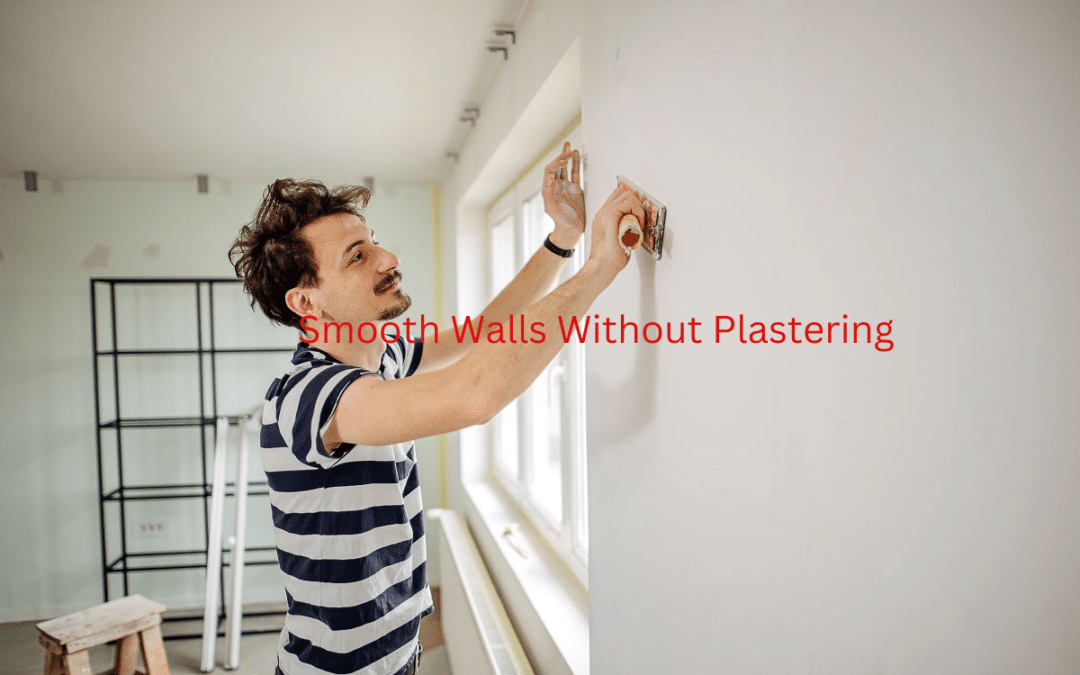Achieving smooth walls without the mess and complexity of traditional plastering can be a desirable option for many DIY enthusiasts. Whether you’re looking to refresh an old wall or finish a new construction without plaster, several alternative methods can help you achieve a smooth finish efficiently. This guide explores some of the best non-plastering techniques for smoothing walls.
1. Joint Compound (Drywall Mud)
Using a joint compound, commonly referred to as drywall mud, is an excellent way to smooth walls without plastering. It’s particularly effective for repairing small holes, cracks, or minor imperfections.
- Application: Apply the joint compound using a wide putty knife or trowel. Spread a thin layer over the wall surface and allow it to dry completely. Once dry, sand the surface lightly with fine-grit sandpaper until smooth.
- Pros: Easy to apply and sand. It dries relatively quickly and can be painted over.
- Cons: Not suitable for extremely rough surfaces without prior treatments.
2. Skim Coating
Skim coating involves applying a very thin layer of joint compound across the entire wall. It’s an excellent way to achieve a smooth finish over rough textures or patched walls.
- Application: Use a squeegee knife to apply a thin, even layer of joint compound over the wall. Work in small sections and use a smooth, sweeping motion. Allow the first coat to dry, then apply a second coat if necessary. Sand lightly once dry.
- Pros: Provides a uniform, smooth finish suitable for painting.
- Cons: Requires some practice to perfect the technique.
3. Wall Liner (Bridging Material)
Wall liners, also known as bridging materials, are thick, paintable wallpapers that can smooth out rough surfaces.
- Application: Wall liner is typically applied like regular wallpaper. You’ll need to apply a heavy-duty adhesive to the wall, then position the liner and smooth it out to remove air bubbles.
- Pros: Can cover heavy textures like woodchip paper, cinder block walls, and more.
- Cons: More expensive than other methods and may require two people for easier handling.
4. Peel-and-Stick Wall Panels
Peel-and-stick wall panels offer a modern solution to wall smoothing that adds a decorative touch. They come in various textures and finishes, such as faux wood, stone, or even smooth panels.
- Application: Simply peel the backing off and stick the panels directly to the wall. Make sure the wall is clean and dry before application.
- Pros: Quick and easy to install, and available in various styles.
- Cons: Not suitable for very uneven surfaces without additional preparation.
5. Paint with Added Texture
For minor imperfections, using textured paint might be sufficient to distract from small blemishes and give the wall a fresh, smooth appearance.
- Application: Textured paint is available pre-mixed or as additives to regular paint. Apply with a roller designed for textured paints to ensure even distribution.
- Pros: Simple application and a variety of textures available.
- Cons: Texture might not appeal to everyone and can complicate future redecorating.
Conclusion
Smoothing walls without traditional plastering can be a rewarding DIY project that saves time and potentially money. Whether you choose to use the joint compound, skim coat, install wall liners, use peel-and-stick panels, or apply textured paint, each method has its own set of benefits and challenges. Evaluate your specific situation, considering the wall’s condition and the finish you desire, to choose the most effective method for your project. With the right approach, you can achieve beautifully smooth walls ready for any decor.

